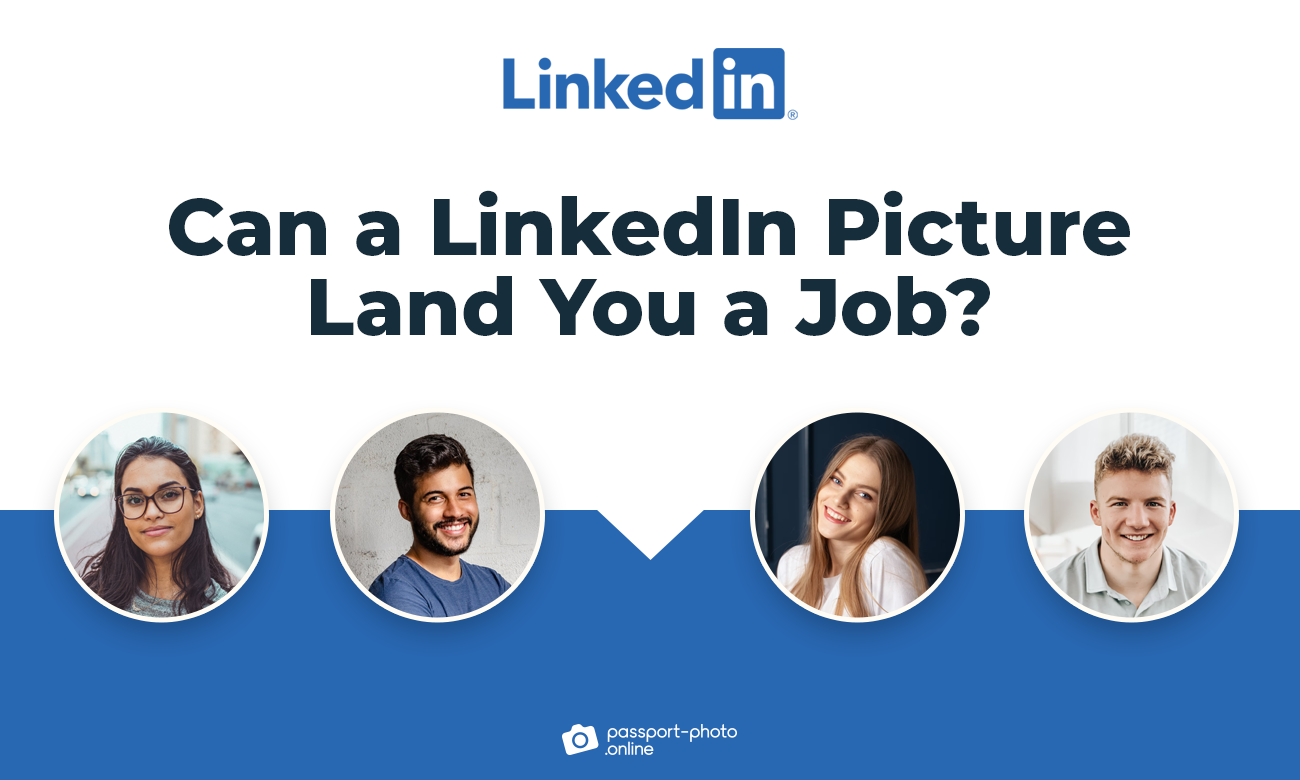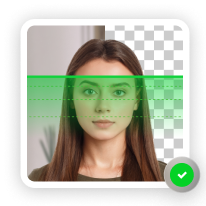We are all looked at, judged, and categorized whether we like it or not.
We check candidates’ LinkedIn profile pictures and sometimes fall into the trap of judging how suitable they are for a job solely based on their looks.
Don’t believe it? Consider this:
A full eight out of 10 respondents surveyed agree a candidate’s LinkedIn profile picture helps them get to know the person better, and 80% believe it’s an important ranking factor.
So, to learn more about how LinkedIn profile pictures affect working professionals’ chances of getting a job, we surveyed 200+ HR pros, business owners, and managers.
Keep scrolling to see our findings.
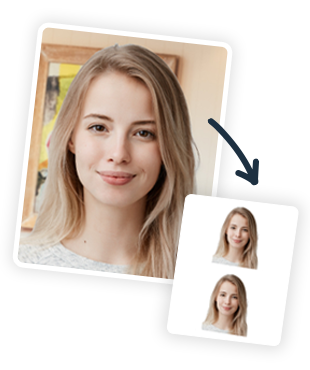
We judge the book by its cover
“Even if we don’t care to admit it, we all judge a book by its cover, and we need to understand how it affects our decision making.” Cindy Corpis, CEO of SearchPeopleFree.
Our data shows 82% of LinkedIn professionals agree we should not judge a book by its cover. That means, at least in theory, they should refrain from evaluating candidates based on their profile picture.
But it turns out job seekers can get rejected for their LinkedIn profile picture more often than you think.
As much as 70% of our respondents admit they turned a candidate down because of their LinkedIn profile picture.
Related articles that may interest you:
- LinkedIn Recruiting: The Deadly Sins Employers Commit [2022 Study]
- LinkedIn Photo Tips (Register on Employers’ Radar in 2025)
- 23+ Mobile Photography Statistics, Facts, and Trends [2026]
- 47+ Biometric Statistics, Facts, and Trends [2026]
- 47+ Freelance Statistics, Facts, and Trends [2026]
- 79+ Return to Office Statistics, Facts, Trends [2026]
- 24+ Employee Burnout Statistics, Trends, and Facts [2026]
We have biases, but we don’t know we have them
Many things can affect our judgment—there’s a false uniqueness bias, fundamental attribution error, or social comparison bias. But it is the halo effect that plays a crucial role. This cognitive bias gives a person some boost in one area, based only on a favorable judgment in another area.
The halo effect makes you believe that better-looking people are also more fit for public offices. A 2010 study shows that we define how a good politician should look, and based on that, we establish a link between their looks and the ability to rule.
How does it relate to LinkedIn profile pictures?
The same halo effect may happen when we go through LinkedIn profiles. Although we know this should not happen, we favor candidates with attractive-looking profile pictures, believing it correlates with their performance. And by the same token, we reject others, disregarding their actual competencies.

71% of the surveyed recruiters admit they rejected a candidate because of their LinkedIn profile picture at least once, despite proper job qualifications.
Almost 4 out of 10 (38%) do it regularly.
Does it mean recruiters get affected by the halo bias every time they turn a candidate down? Certainly not, but it may play its role.
Unconsciously, we may think some candidates are more suitable for a job because of their appearance, just like said 2010 study shows with the politician example.
A first impression can get you a job
Or, at least, increase your chances of landing it.
Alex Shute, the Founder of FaithGiant, admits, “Sometimes I form an opinion about a certain person based on his LinkedIn profile picture because it is the only visual that truly represents him. It boils down to the power of first impressions.”
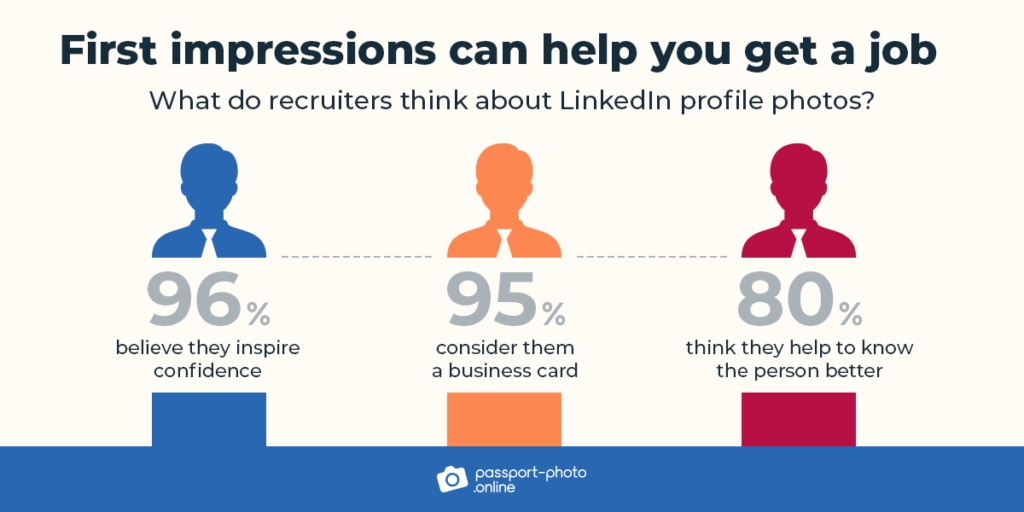
Now, here’s what our study shows:
- 95% believe a LinkedIn profile acts as a business card today.
- Another 96% of the surveyed believe a professional LinkedIn profile picture inspires confidence.
- A full 80% say a candidate’s profile picture helps them get to know the person better.
The takeaway? First impressions matter and they can either help you score an interview or get passed over.
Although we know it’s wrong, we still do it
As mentioned above, 82% of the surveyed recruiters agree we should not judge a book by its cover.
That said, over seven out of 10 recruiters admit they rejected a candidate for their LinkedIn profile picture, despite having proper qualifications.
This data is self-contradictory, but we decided to investigate further and find out to what extent people agree with the following statement: “Candidates should only be judged by their competencies.”
The results came as follows:
- 78% of the surveyed LinkedIn recruiters agree to some extent that candidates should be judged only by their competencies.
Like with the book-cover example, we decided to take a closer look at the people who admitted they turn candidates down because of their profile picture to understand their POV better.
It turns out, 61% of the people who dismiss candidates due to their looks also believe candidates should be judged only by their competencies. The book-cover example is probably too general to apply to LinkedIn recruiting in general, but this data focuses specifically on this aspect.
Is it solely because we judge people by their appearance, or are there other factors involved? Are education and experience the only insights into how valuable and dedicated the potential candidate is?
To better understand it, the words of Ravi Davda, the CEO at Rockstar Marketing, might help: “I ignore any profile that doesn’t have one [picture]. If they haven’t taken 5 minutes to put a profile photo up, I can’t take them seriously.”
Who checks the resume, and who checks the picture?
Our survey has investigated three groups responsible for recruitment:
- HR pros
- Managers
- Business owners
We asked them if a LinkedIn profile picture would be the deciding factor if they had two similar candidates.
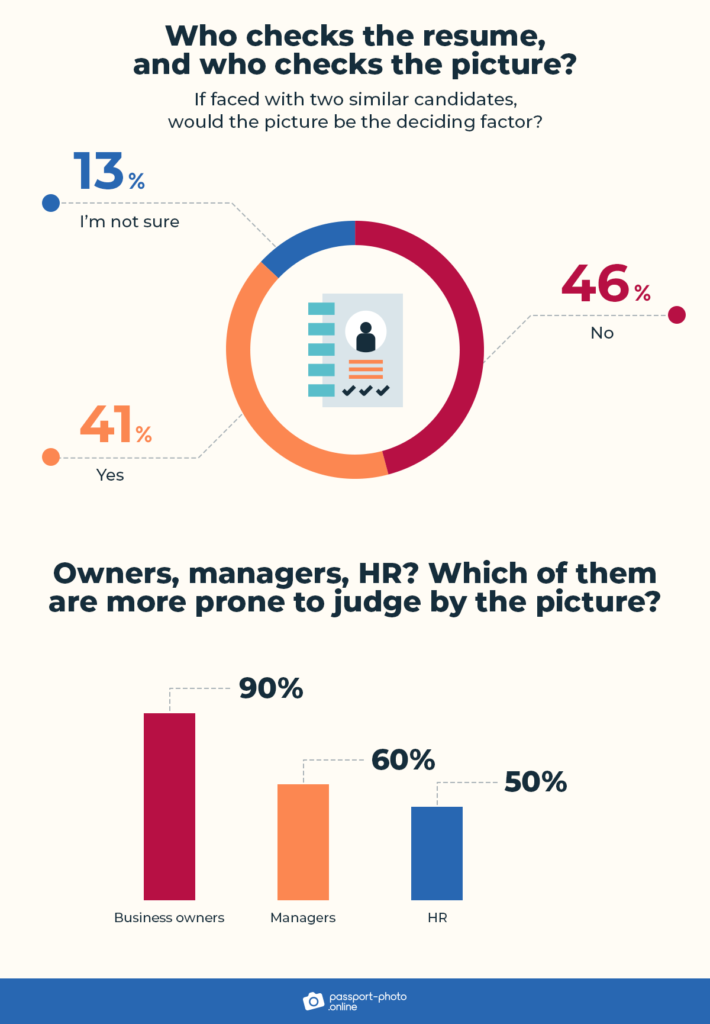
Interestingly, the business owners seem to favor candidates with better-looking LinkedIn profile pictures. For over 90% of them, a LinkedIn profile picture is an important ranking factor. Managers are slightly behind at 60%, and HR professionals came in at 50%.
As a follow-up, we asked said respondents how likely they are to overlook candidates without a LinkedIn profile picture. Below are the responses:
- Business owners: 88%
- Managers: 74%
- HR pros: 33%
To sum up, here’s what Josh Wright, the CEO of CellPhoneDeal, has to say: “In my experience, hiring an individual with a fully set up profile on LinkedIn has proven to be more successful than hiring individuals who haven’t put that effort in, as those with a good profile have seemed to be much more productive.”
Is it worth showing your personality?
We want to work with like-minded people, whether in terms of thinking or the way of doing business. In social psychology, it’s called in-group favoritism.
Additionally, we want to work with people we like.
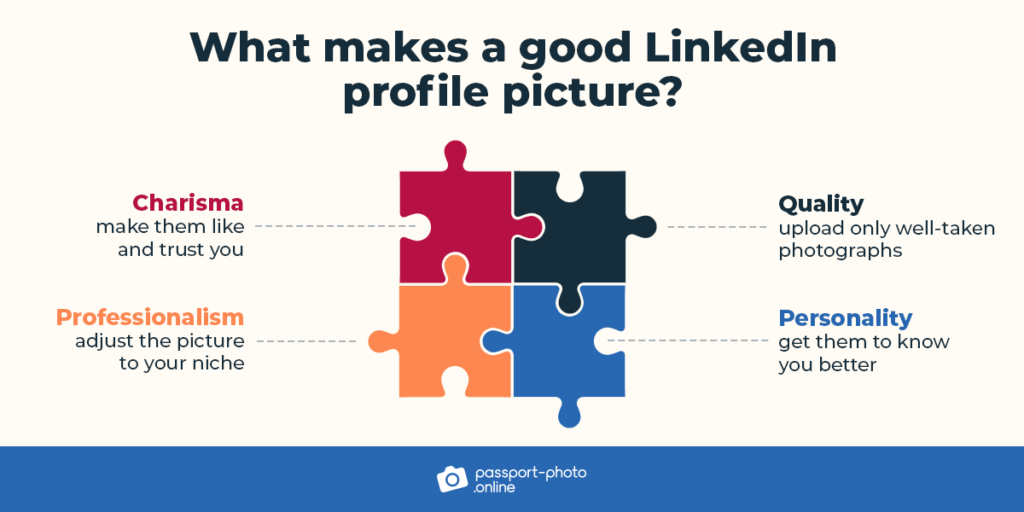
So, we wanted to examine how important the liking aspect is to recruiters. It turns out 67% of recruiters consider the subjective feeling of likeness vital.
But it is not only the positive emotions recruiters find important during candidate screening. What plays an equally important role is authenticity.
Recent research shows that authenticity is among the essential attributes of a profile picture. In our own study, 65% of the respondents pointed out that authenticity is crucial, and the lack of personality ranks fourth for the most common profile picture mistake.
But it is professionalism that is king. Over 87% of our respondents indicated that picture professionalism is essential when rating profile pictures.
And, of course, the quality. All of the above factors can fail to prove charming if the picture is pixelated, lacks proper lighting, or was simply taken poorly.
Could a vacation picture cost you a job?
We already know that recruiters look at LinkedIn profile pictures. The question is, how to optimize it so recruiters notice you?
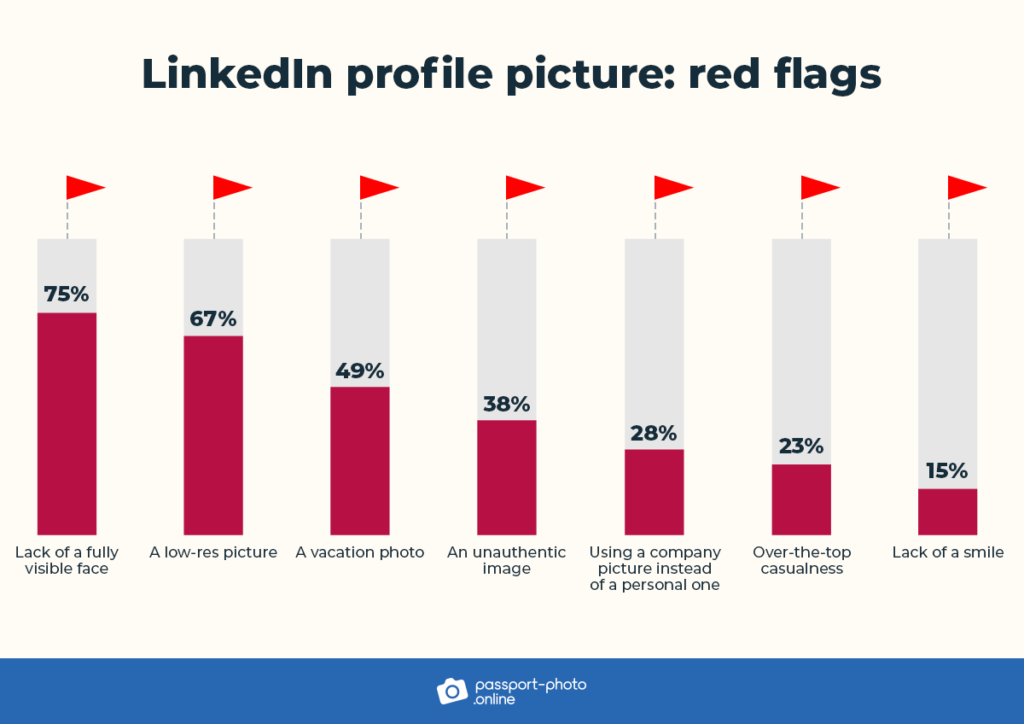
First, let’s look at the red flags:
- Lack of a fully visible face: 75%
- A low-res picture: 67%
- A vacation photo: 49%
- An unauthentic image: 38%
- Using a company picture instead of a personal one: 28%
- Over-the-top casualness: 23%
- Lack of a smile: 15%
Showing your personality is important, but showing it off with your spare-time activities is not the way to do it. Vacation shots may not be well received. Unless, of course, you are applying for an activity-related job (e.g., lifeguard).
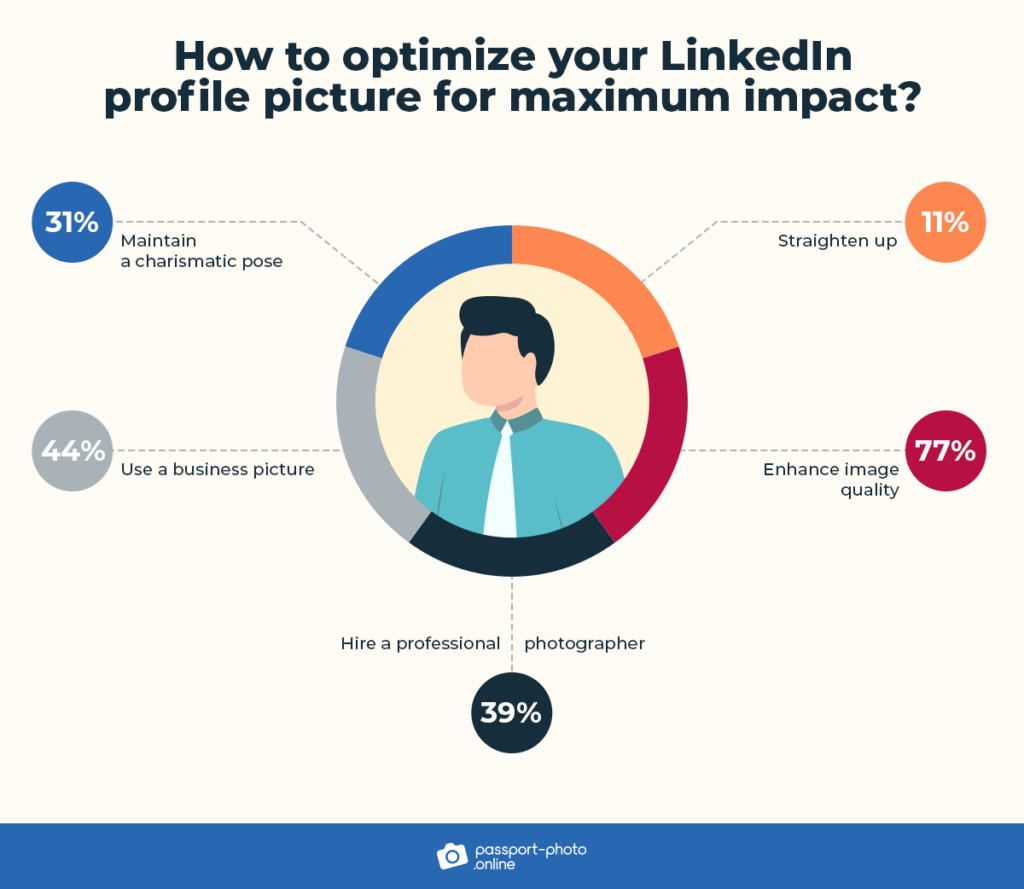
Now, how to improve your LinkedIn profile picture?
- Enhance quality: 77%
- Use a business picture: 44%
- Hire a professional photographer: 39%
- Maintain a charismatic pose: 31%
- Hold a serious posture: 11%
Also, here’s what Mario Perez, a professional photographer and founder of Blog del Fotografo, recommends: “I always recommend to try to wear a type of clothes that matches the style and culture of the industry and type of job the candidate is looking for.”
Is it easier to get a job if you’re attractive?
Since it’s down to a quick peek at an image in most cases, it is the looks that may influence recruiters’ judgment.
So, does it mean some of us are doomed?
Luckily, not. First, according to our survey, it is not the appearance that recruiters seek. It is the overall quality and professionalism of the photograph that matters.
A LinkedIn profile picture’s professionalism is considered an important ranking factor by over 60% of the respondents. Professionalism here means a headshot taken with a neutral background.
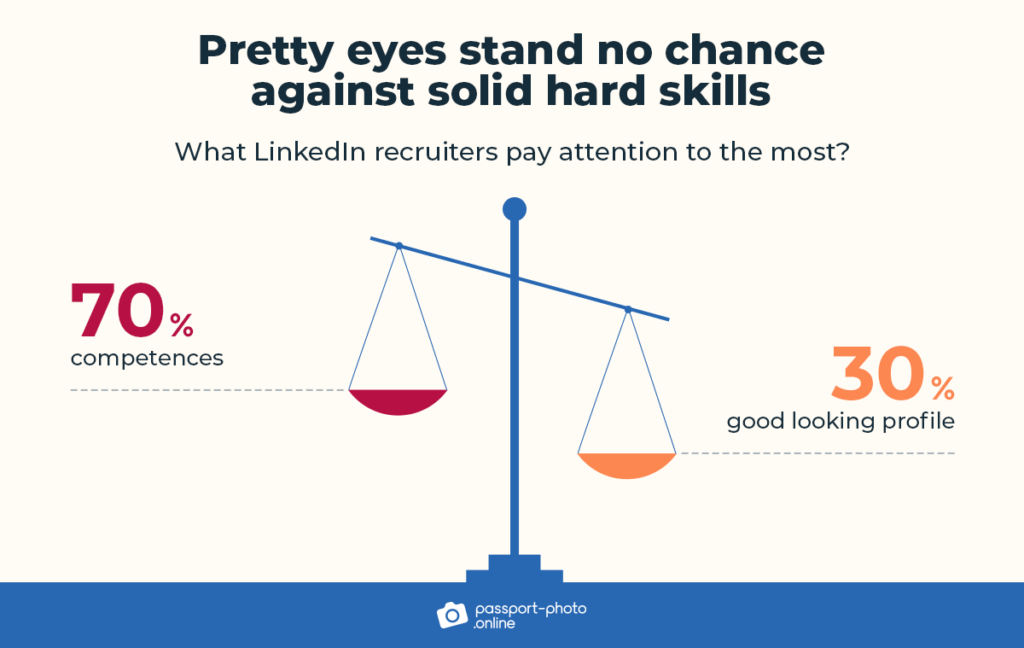
Pretty eyes stand no chance against solid hard skills
The good news is that according to our study, competencies are still the most critical factor for LinkedIn recruiters.
70% of them prefer candidates with a strong resume vs. someone with a pretty LinkedIn profile picture.
But having a LinkedIn profile picture comes with yet another benefit: it means your profile is active and isn’t fake.
Stefan Smulders, the CEO of Expandi, closes it down in two powerful sentences: “The majority of profiles that have no profile pic are fake or fishy, so to avoid any future hassle, I just don’t take them into account. But even if they’re real candidates, the fact that they aren’t willing to show their face in this particular setting is enough for me to disregard them completely.”
Better set your LinkedIn profile picture up
Having a fully set up LinkedIn profile not only increases your chances of appearing in search but also helps you make a better first impression.
Our study shows that a profile picture could make the difference between getting contacted and being overlooked.
However, a professional profile picture alone won’t cut it. It needs to be tailored to the niche.
Many people are concerned about the potential racial, ethical, or sexual discrimination that may happen if we attach a face to our profiles. In this case, the words of Chloe Chioy, a hiring manager and CV expert at CVGenius.com, offer some relief: “Always have a professional photo on LinkedIn. If you believe that a company might refrain from hiring you because of racism, ageism, or sexism, that company is not for you.”
Key findings
- Quality and professionalism are among the most critical factors for LinkedIn recruiters when they consider candidates. Recruiters use LinkedIn to get a first impression of candidates and often associate their profiles’ quality with their performance. It’s good to show a bit of personality.
- 71% of recruiters admit they rejected a candidate because of their LinkedIn profile picture at least once.
- 80% of LinkedIn recruiters believe they can get to know candidates better through profile pictures.
- 61% of people who reject profiles for their profile picture also believe candidates should be judged only by their competencies.
- 88% of business owners admit they are likely to dismiss a profile without a picture.
- 87% of LinkedIn recruiters consider the professionalism of a profile picture a critical ranking factor.
- 70% of LinkedIn recruiters prefer candidates with a strong resume vs. someone with a pretty LinkedIn profile picture.
Methodology
We reached out to business owners, HR pros, and managers to conduct this survey and collected nearly 200 responses.
Fair Use Statement
This study aims to spread awareness about the effects of LinkedIn profile pictures (or lack thereof) on job seekers’ hireability. We did it to benefit candidates, recruiters, and other groups interested in the topic.
If you believe our findings helped you, or you find them exciting and want to share them, feel free to do it. But please remember to mention the source and link back to this study.
Special thanks
We wouldn’t be able to write this piece without the help and dedication of many professionals who shared their insights with us.
Due to the high number of responses, we could not include everyone, but we would like to express our gratitude to the people who made this research possible.
Thank you.
Additional thanks to Nataly Kharkina from Greenbabyworld and Maataaf Khan from Indolj for answering our questions and actively supporting us.
Bibliography
- Verhulst B, Lodge M, “Lavine, Howard: “The Attractiveness Halo: Why Some Candidates are Perceived More Favorably than Others”
- Wojciszke B, “Social Psychology”
- Willis J, Todorov A, “First Impressions: Making Up Your Mind After a 100-Ms Exposure to a Face”
Sources

Adam is an SEO & Digital PR writer with a child’s curiosity about the surrounding world. His superpower to dig out juicy facts got him citations in Forbes, Social Media Today, and 90+ other news outlets. Adam enjoys snapping pictures and won the national Huawei Next Image Award.
